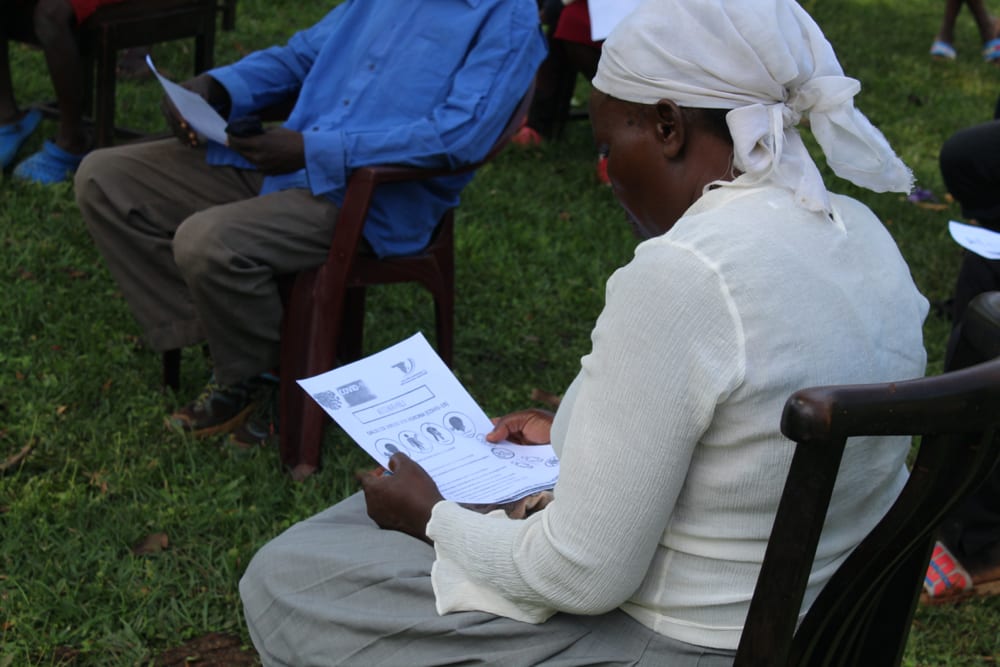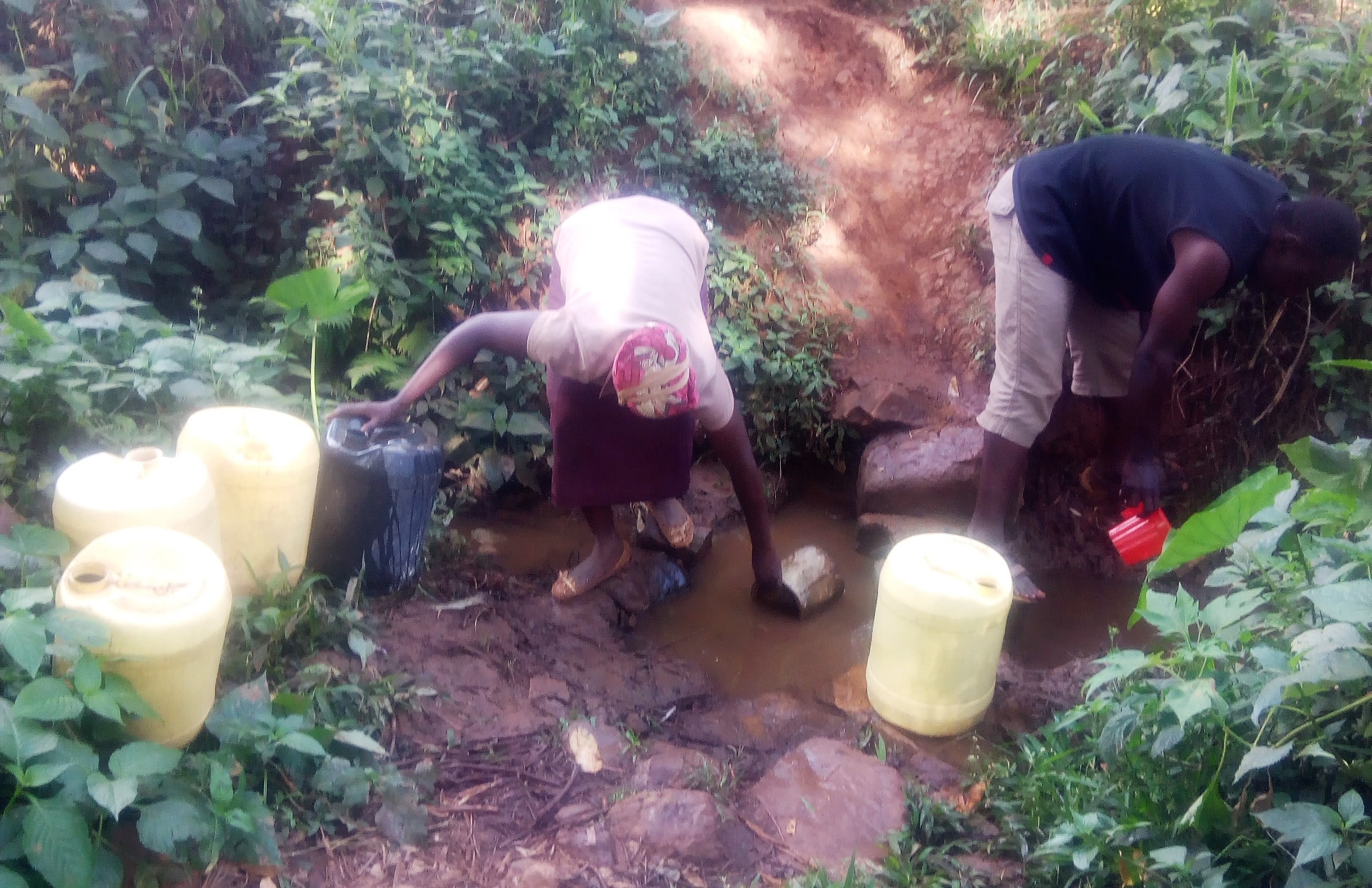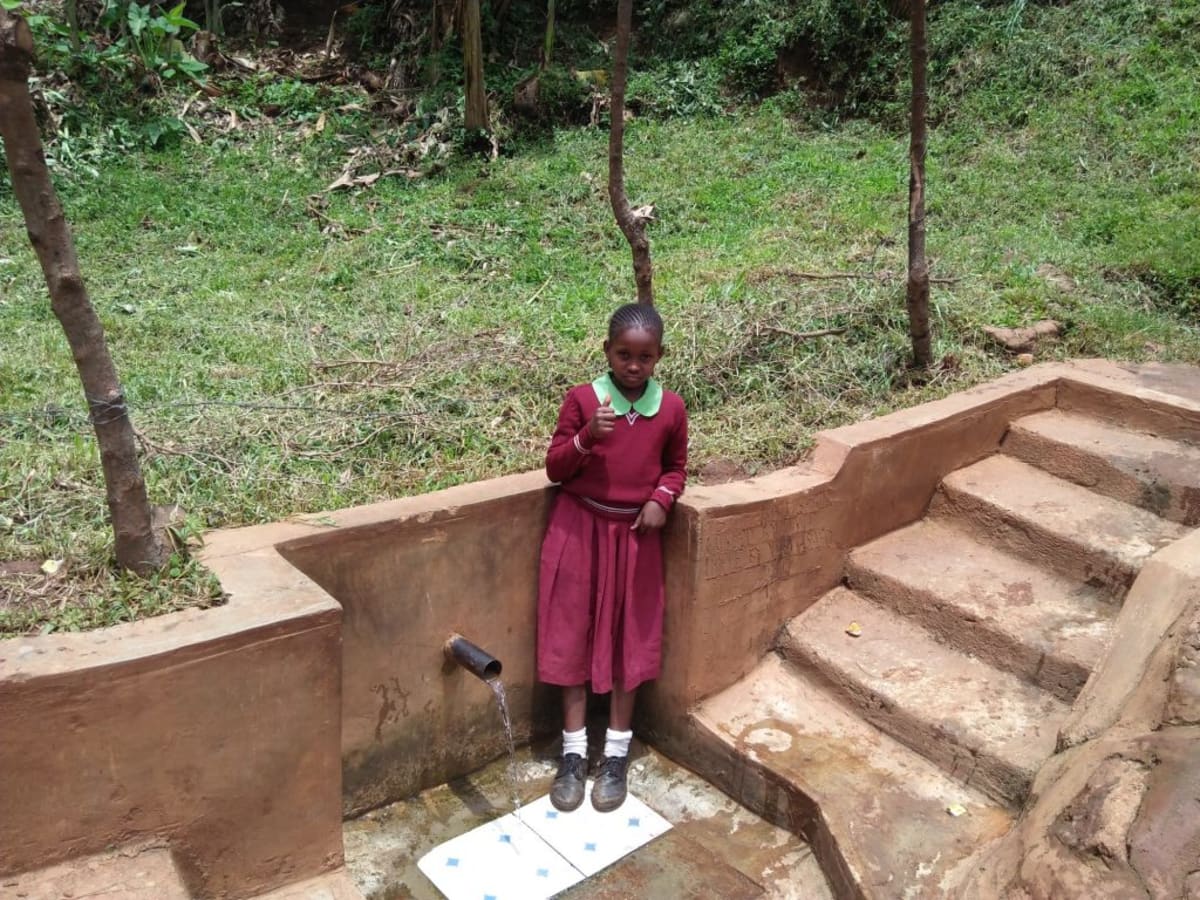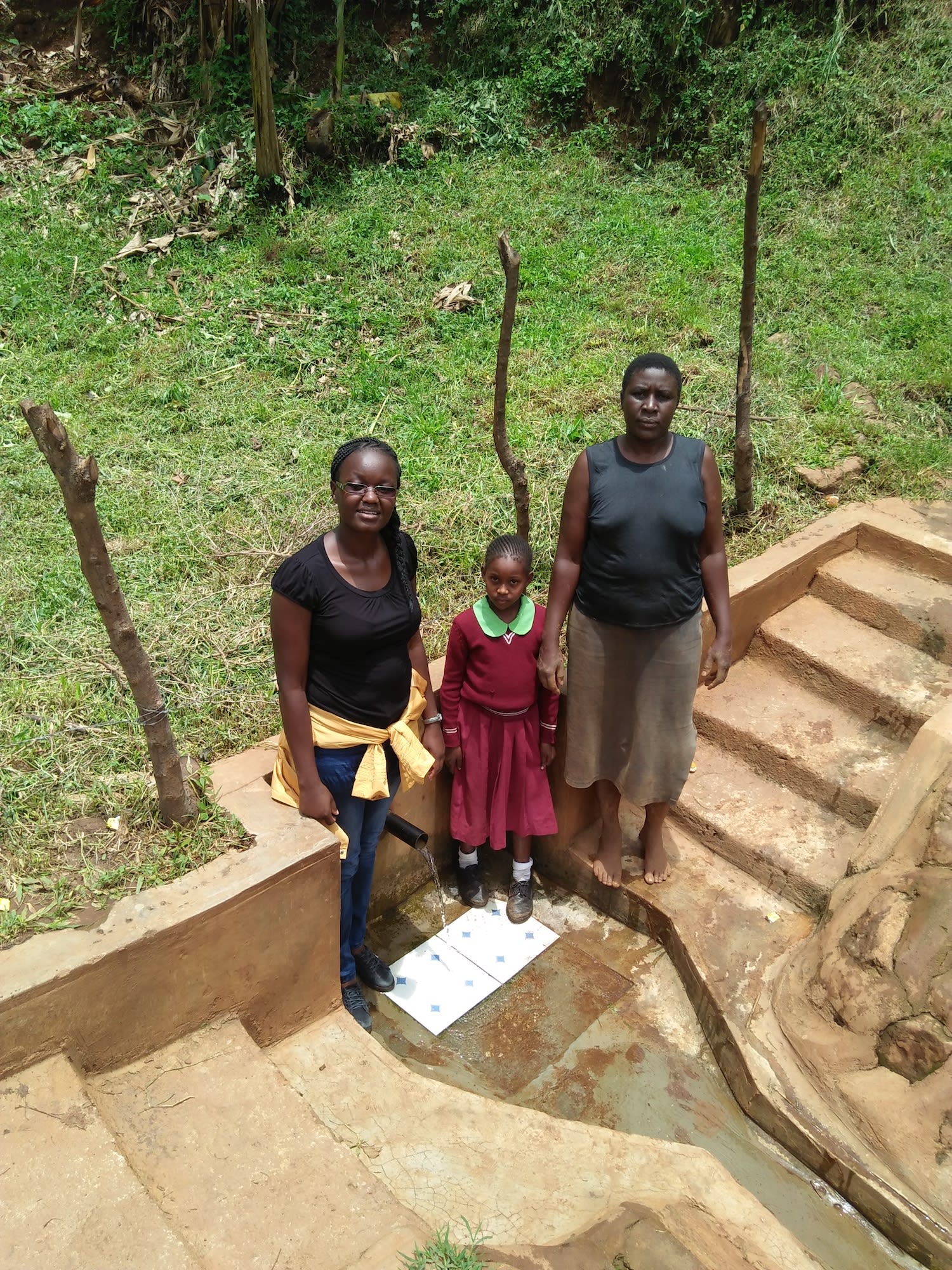This project is a part of our shared program with Western Water and Sanitation Forum (WEWASAFO). Our team is pleased to directly share the below report (edited for clarity, as needed):
Welcome to the Community
Most people in Lutonyi Community wake up at 5am to get ready for the day. Children get ready for school, while adults prepare for their respective jobs. Most of the men in this community are motorbike operators downtown, and head out after eating breakfast. Women prepare the children for school, then prepare for farm work. Some of the other women do casual work like washing clothes for a small fee or fetching water for construction projects.
Everyone's work day usually ends around 5pm when they head back home. But as for the men, they continue taxiing with their motorbikes late into the night.
Water Situation
Shihachi Spring is the main water source in Lutonyi Community, serving a total of 40 households. Its water is used for drinking, cooking, cleaning, and irrigation. The spring is open to contamination from many different sources. When it rains, waste is washed into the water. As animals come and go to quench their thirst, they too contaminate the water. Water is visibly contaminated, proven as community members drink and then suffer from waterborne diseases such as bilharzia and typhoid.
Still, the community members express their joy for the spring's existence, saying that it is of great significance in their lives. During our visit, we also learned that the spring serves a nearby school as their main water source.
Sanitation Situation
Less than half of the households here have pit latrines which are semi-permanent, made of wood floors, walls of mud, old iron sheet roofs and doors of old rags or iron sheets. They are often rickety structures that offer little privacy, and become unsafe after years of use. The wood floors cannot be easily cleaned and decay to the point of collapsing, oftentimes while in use. The mud floors weaken if not fortified, too.
There are a few bathing shelters but absolutely no dedicated containers for hand-washing, proving that personal hygiene is not a current priority.
Plans: Hygiene and Sanitation Training
Community members will attend hygiene and sanitation training for at least two days. This training will ensure participants are no longer ignorant about healthy practices and their importance. The facilitator plans to use PHAST (Participatory Hygiene and Sanitation Transformation), CLTS (Community-Led Total Sanitation), ABCD (Asset-Based Community Development), group discussions, handouts, and demonstrations at the spring.
Training will also result in the formation of a committee that will oversee operations and maintenance at the spring. They will enforce proper behavior around the spring and delegate tasks that will help preserve the site, such as building a fence and digging proper drainage.
Plans: Sanitation Platforms
On the final day of training, participants will select five families that should benefit from new latrines.
Training will also inform the community and selected families on what they need to contribute to make this project a success. They must mobilize locally available materials, such as bricks, clean sand, hardcore, and ballast. The five families must prepare by sinking a pit for the sanitation platforms to be placed over. All community members must work together to make sure that accommodations and food are always provided for the work teams.
Plans: Spring Protection
Protecting the spring will ensure that its water is safe, adequate and secure. Construction will keep surface runoff and other contaminants out of the water. By volunteering as unskilled laborers, attending trainings, and providing food and accommodation for the skilled artisan, community members confirm their investment in the sustainable management and maintenance of the project upon completion.
Fetching water is predominantly a female role, done by both women and young girls. Protecting the spring and offering training and support will therefore help empower the female members of the community by giving them more time and efforts to engage and invest in income-generating activities.

 Protected Spring
Protected Spring
 Rehabilitation Project
Rehabilitation Project








































